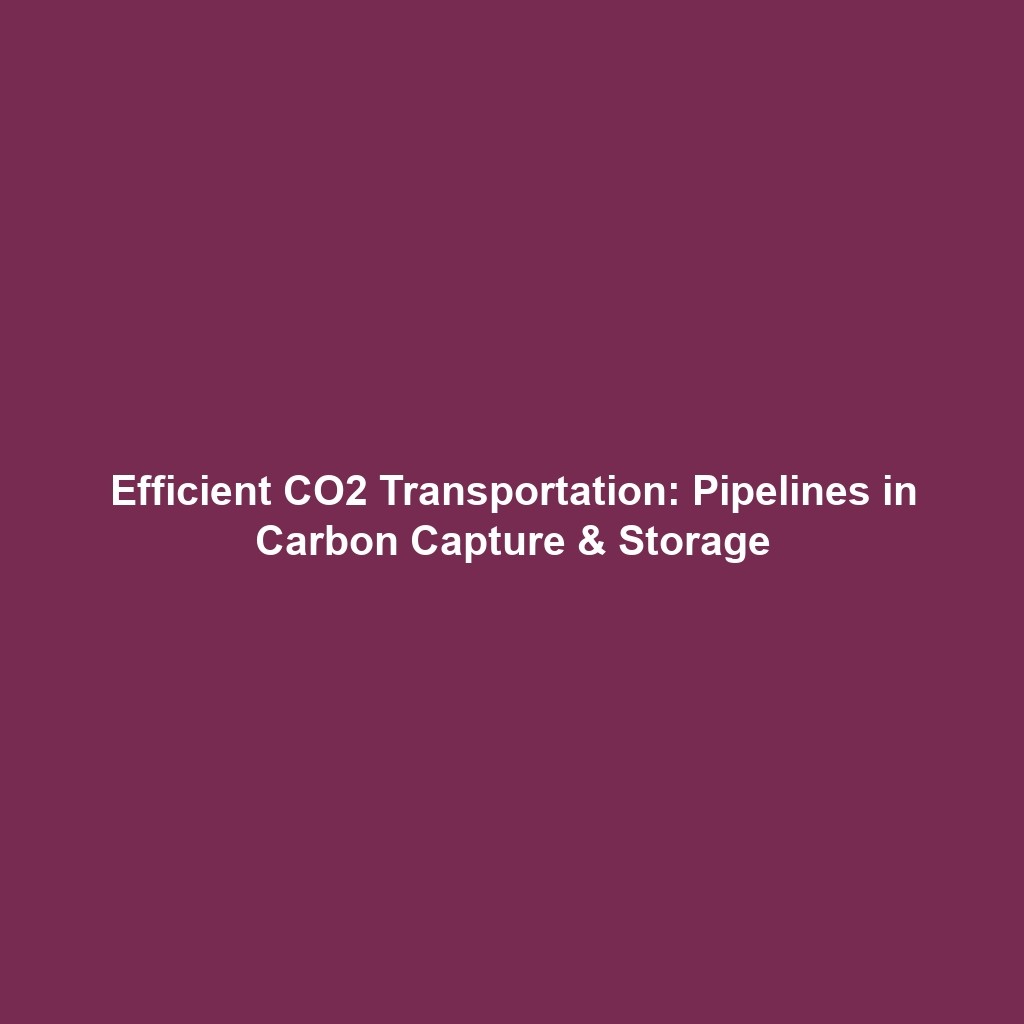Investments in Carbon Capture & Storage by Oil and Gas Companies
Introduction
In the face of increasing climate concerns, oil and gas companies, such as Shell and ExxonMobil, are investing heavily in Carbon Capture & Storage (CCS) technology to reduce their carbon emissions. This strategic move not only positions these companies as leaders in sustainability but also plays a crucial role in the global effort to combat climate change. CCS has become a focal point in discussions about energy transition, highlighting how traditional fossil fuel industries can adapt to a low-carbon future while continuing to meet energy demands.
Key Concepts
Understanding Carbon Capture & Storage (CCS)
Carbon Capture & Storage (CCS) is a technology designed to capture carbon dioxide (CO2) emissions produced from the use of fossil fuels in electricity generation and industrial processes, preventing the CO2 from entering the atmosphere. The captured CO2 is then transported and stored underground in geological formations.
Impact on Oil and Gas Operations
For oil and gas companies such as Shell and ExxonMobil, investing in CCS serves multiple purposes:
- Reduces greenhouse gas emissions, helping to meet international climate targets.
- Enables continued use of fossil fuels by mitigating their environmental impact.
- Position companies favorably in an evolving regulatory landscape focused on sustainability.
Applications and Real-World Uses
How CCS is Implemented in the Oil and Gas Sector
Oil and gas companies are utilizing CCS in various ways:
- Enhanced Oil Recovery (EOR): Some companies inject captured CO2 into mature oil fields to help extract remaining oil, while simultaneously storing the CO2 underground.
- Industrial Emission Reduction: Refineries and chemical plants are pairing CCS technologies with production processes to greatly reduce emissions.
- Partnership Initiatives: Collaborations with research institutions and governments to develop and scale innovative CCS solutions.
Current Challenges
Challenges of Implementing CCS
Despite the potential of CCS, there are significant challenges that oil and gas companies encounter:
- High Costs: The capital required for CCS infrastructure can be substantial.
- Regulatory Hurdles: Differences in environmental regulations across regions can complicate CCS implementation.
- Public Perception: Skepticism about the safety and effectiveness of CO2 storage can hinder acceptance.
Future Research and Innovations
Next-Gen CCS Technologies
Looking forward, oil and gas companies are poised to explore several innovations in CCS:
- Direct Air Capture: Technologies that capture CO2 directly from the atmosphere are gaining traction and may complement traditional CCS methods.
- Biological Carbon Sequestration: Enhanced natural processes, such as reforestation and soil management, can work alongside CCS.
- Government Incentives: Potential subsidies and funding for CCS projects could make them more economically viable.
Conclusion
As oil and gas companies like Shell and ExxonMobil invest significantly in Carbon Capture & Storage, they not only aim to comply with emissions regulations but also play an essential role in mitigating climate change. The developments in CCS technology represent a vital step towards building a sustainable energy future. For more information on how CCS is driving sustainability in the energy sector, visit our carbon capture resources page.









